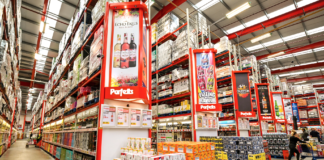Fresh is big business. Tesco Express and Sainsbury’s Local offer a comprehensive fresh selection and independent c‑stores need to compete to survive. Not only that, consumer interest in provenance, organic produce and healthier eating has risen, meaning that demand for quality fresh produce from foodservice operators is as high as it’s ever been.
It’s not surprising then, that there’s a plethora of specialist fresh wholesalers out there and growing expertise in convenience and foodservice channels. Kash Khera, director of Simply Fresh, says that fresh is the direction for retailers to head in if they want to stay competitive.
“Convenience is going to turn into a fresh hub. It will be about bakery, food for now, food for the weekend, fresh meat, and fruit and vegetables – all the things that people cannot stock up and buy for,” he says.
It’s a sentiment that is echoed by Bestway, which recently launched a range of 20 own-label fresh fruit and vegetable products to help its retailers increase their fresh sales. Senior trading controller for fresh, frozen and foodservice Steve Carter explains: “All convenience stores have to have the whole package because consumers expect it. If you’re not at least tinkering, you’re not credible. But that’s the beauty of our range – all the best-selling SKUs, pre-packed, pre-priced and prepared for selling. We are trying to make it as easy as possible for retailers to get into a category that is showing tremendous growth.”
For foodservice customers, the significance of fresh is even greater and their needs more varied. From prisons and schools that need prepared vegetables to smaller high street cafés, fresh and chilled products are an essential part of the trade. Andrew Tiplady, managing director of Swithenbank – the fresh and chilled arm of Bidvest 3663 – says: “Fresh products are not the preserve of high-end restaurants, even an ‘all you can eat for £6’ café needs fresh ingredients – it goes right the way through the industry.”
Sales of fresh and chilled at Swithenbank have grown 20% annually for the past few years, growth that is indicative of an ever-increasing opportunity for wholesalers. But it’s an opportunity that needs careful planning and execution to maximise, and one that has potential pitfalls. The balance between availability and wastage can be hard to achieve with high demand and short shelf life. Kepak’s marketing director John Armstrong says there is still room for wholesalers to improve how they manage it.
“When I go into a depot, the chilled area often feels a little unloved – there’s still some catching up to be done. Keeping on top of things, like the life cycle of the food, stock rotation and order frequency, mean fresh does take more care and effort – but the margins are there to be had,” he says.







